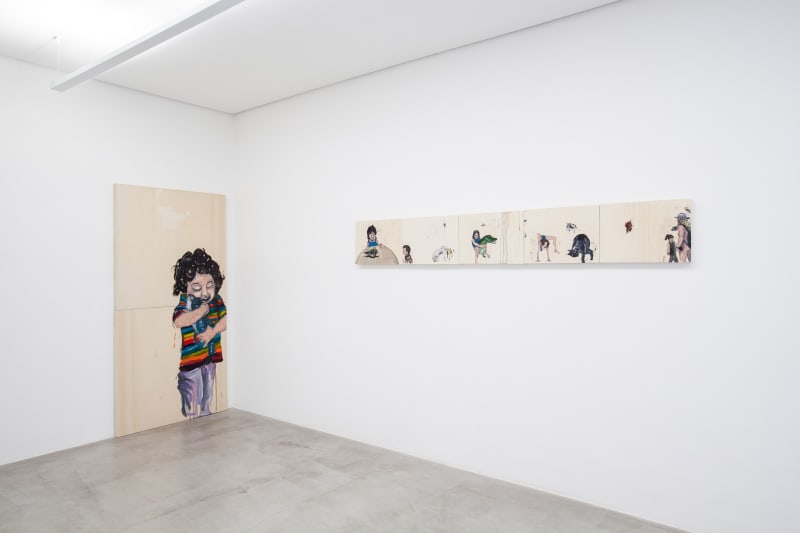Characters walking over a clamorous and polyphonic plateau
Fuleragem Polissistêmica nº 5, the first solo exhibition in São Paulo by Brasilia artist Camila Soato, and which closes the 2013 season of the Zip’Up project, could be seen as a large, pictorial installation, in which drawing and the three-dimensional also find space, and which resembles a somewhat amateur vision of cinematographic art.
The versatile space of the room for new artists has been occupied by small narratives, some in close proximity, others a certain distance apart and regarded in isolation, but that relate to the pleasure and fascination of the earliest experiments with moving pictures. Thus, the pictures/stills are like snapshots that verge on the badly done, the eschatological, the vulgar and that, together, create new meanings. While the prosaic serves as a poetic vector, the specificities of the field of painting are not intimidated. Small, streaky zones of colour where the material is imposed, a game of voids and incompletions with denser areas and a beige background in all the works help form the unique style of this artwork.
The relaxed atmosphere and unusual figures that dominate the artist’s compositions might give the false impression that the intuitive and the superficial are involved in her daily tasks. Nothing could be more false. Soato has a somewhat monastic studio discipline, producing daily not only bent over the easels with brush in hand, but seeking a repertoire of diverse image references, via the internet or other kinds of record (nothing too refined, however), and reading several different sources, from philosophy to literature. Taking a closer look, one can detect that spark of lack of control, as if Soato’s visual propositions united pulp stories, scenes from the Roman outskirts of Pasolini’s films, Foucault’s writings and discarded photographs from family albums, sepia images portraying children displaying a certain lack of appreciation and affection toward different friends, like soft toys and mongrel dogs.
The more horizontal arrangement also serves to amplify the melancholy of the scenes created by the artist. Of particular strength in this regard is the graphite sketching commonly found in the compositions, generating new dialogues with the matter, light and colours of the painting. Without forcing the issue at all, Soato seems to bring a setting of solitude and fantasy as a routine escape, against the backdrop of central Brazilian landscapes free of verticality. One can almost feel the really dry air, the lack of visual references of big cities, the beaten land, by old cars and motorbikes raising dust along the highway. Unique towns, as if Le Corbusier's architectural modernism, in its tropical version, were disintegrated and made to look more like conurbations inhabited by outcast characters from books, from a Cormac McCarthy, for example.
In this set, the diptychs displayed by the artist are significant, especially that which portrays a little girl hugging an alligator, in a piece of greater scale than the rest. What is the little girl staring at? This uncomfortable response, as if showing that there is always something lurking, an imminent danger, but that seems to be just wandering through the scenarios, provokes this restlessness that disturbs and remains in the viewer's retina and thoughts after visiting Fuleragem Polissistêmica nº 5.
Mario Gioia, 2013

